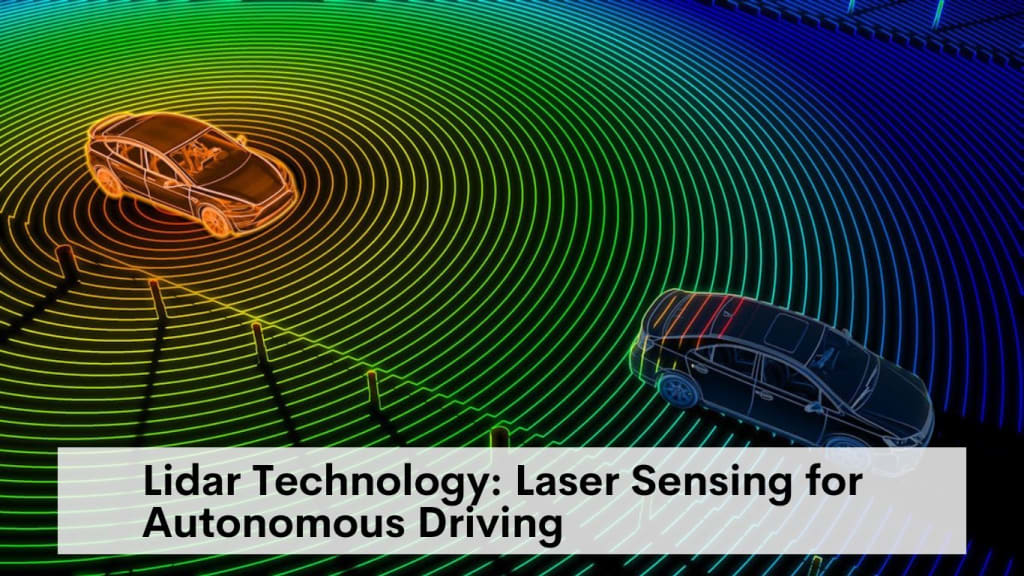
Autonomous driving, once seen as a futuristic concept, is now rapidly becoming a reality in the automotive industry. The key to achieving full autonomy lies in the development and integration of advanced sensing technologies. Among these technologies, Lidar (Light Detection and Ranging) plays a crucial role. Lidar utilizes laser-based sensing to create highly accurate and detailed 3D maps of the surrounding environment. These maps enable self-driving vehicles to navigate safely and make informed decisions. In this article, we will explore Lidar technology in depth, including its principles, applications, and its significant impact on the future of autonomous driving.
The Science Behind Lidar Technology
Lidar operates on the principle of remote sensing using lasers. It emits pulsed laser beams and measures the time it takes for the light to bounce back after hitting an object. Based on the time-of-flight principle, the device calculates the distance to the object. This process is repeated multiple times per second, resulting in a point cloud—a collection of 3D data points representing the shape and location of objects in the environment.
Pulsed Lidar vs. Continuous Wave (CW) Lidar:
Lidar systems can be categorized as pulsed or continuous wave (CW). Pulsed Lidar emits short bursts of laser pulses and measures the time it takes for the reflection. On the other hand, CW Lidar emits a continuous laser signal and measures the shift in frequency caused by the reflection.
Solid-State vs. Mechanical Scanning Lidar:
Lidar devices can utilize either solid-state or mechanical scanning. Solid-state Lidar employs microelectromechanical systems (MEMS) mirrors to electronically steer the laser beam. Mechanical scanning Lidar, on the other hand, uses moving parts to physically steer the laser beam.
Components of a Lidar System
A typical Lidar system consists of several essential components that work together to capture and process environmental data accurately:
Laser Source: The laser source is the core component of a Lidar system. It emits laser pulses with high precision and accuracy.
Optics: Optics, including lenses and mirrors, direct and focus the laser beams toward the target area and collect the reflected light.
Photodetector: The photodetector captures the reflected laser light and converts it into an electrical signal for further processing.
Time-of-Flight Measurement Unit: This unit measures the time it takes for the laser pulses to travel to the target and back. It determines the distance to objects in the environment.
Scanning Mechanism: In scanning Lidar, whether MEMS-based or mechanically driven, the scanning mechanism allows the laser beam to cover a wider field of view.
Lidar for Autonomous Driving: Advantages and Challenges
Lidar technology plays a pivotal role in the development of self-driving vehicles due to its numerous advantages:
High Accuracy: Lidar produces highly accurate 3D maps, enabling autonomous vehicles to perceive their surroundings with exceptional precision. This accuracy is crucial for detecting and identifying objects, pedestrians, and road features.
Real-Time Data: Lidar operates at high speeds, capturing and processing data in real-time. This capability enables instantaneous responses to dynamic road conditions and potential hazards.
Versatility in Environments: Lidar is effective in various weather conditions, including rain, fog, and darkness. This reliability makes Lidar a sensor of choice for 24/7 autonomous operation.
However, Lidar technology also faces challenges that need to be addressed for widespread adoption in autonomous vehicles:
Cost: Historically, Lidar systems have been expensive to manufacture, hindering their integration into mass-produced vehicles. Ongoing research and technological advancements are driving down costs, making Lidar more accessible.
Perception Limitations: While Lidar provides accurate distance measurements, it can face challenges with certain objects such as transparent or low-reflectivity surfaces. Overcoming these limitations through sensor fusion with other technologies like cameras and radar is crucial.
Applications of Lidar Technology
Lidar technology finds applications beyond autonomous driving, contributing to various fields and industries:
Mapping and Surveying: Lidar is widely used in cartography and surveying to create detailed 3D maps of landscapes, urban areas, and infrastructure. Its ability to capture precise topographic information makes it invaluable in these domains.
Environmental Monitoring: Lidar assists in environmental research, including forest monitoring, coastal erosion assessment, and atmospheric profiling. It enables scientists to study and analyze complex natural systems with high accuracy.
Robotics and Drones: Lidar plays a vital role in robotic systems and unmanned aerial vehicles (UAVs). It provides real-time mapping and object detection capabilities, enhancing the autonomy and situational awareness of these devices.
Conclusion
Lidar technology has emerged as a cornerstone of autonomous driving, revolutionizing the way vehicles perceive and interact with their environment. With its ability to generate high-resolution 3D maps and accurately measure distances, Lidar enhances safety, navigation, and decision-making in self-driving cars. As technology advances and becomes more affordable, Lidar holds immense potential to shape the future of transportation and transform various industries through its applications in mapping, environmental monitoring, and robotics. The continued development and integration of Lidar technology will bring us closer to achieving widespread adoption of autonomous vehicles and a safer, more efficient transportation ecosystem.
About the Creator
Autoblog
Autoblog is a Professional Car Reviews, News, and Car Buying Advice Platform. We’re dedicated to providing you with the best of Car Reviews, News, and Car Buying Advice.
website: https://autoblog.com.in/






Comments
There are no comments for this story
Be the first to respond and start the conversation.